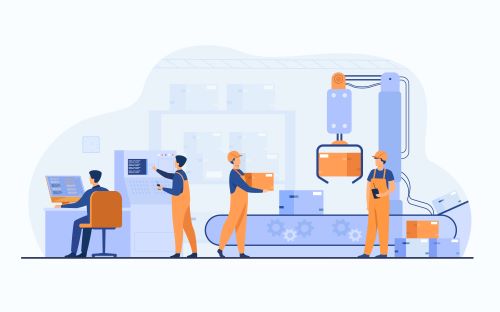Some experts think that we are in the middle of a fourth industrial revolution. Here are four actions that you can take to ensure that you remain with the times.
-
Retrain workers
Much of the mundane, busy work that we’re currently doing may soon be automated. In the not-too-distant future, machines could take over many of our most repetitive, mindless, boring and dangerous tasks. This will free up our workers to carry on with tasks that are more interesting, meaningful and engaging.
In the long term, these changes will be highly beneficial; but, in the short term, the transition is not likely to be a smooth one. We may not need as many postal workers, travel agents, flight attendants, and cashiers as we did previously. The result will be that sizable numbers of people will need to change course; however, the people who are currently doing these jobs may be reluctant to make a voluntary career change.
Historically, it has often been more affordable for employers to reskill and redeploy their current employees than it has been for them to recruit, onboard and train new ones – so it is to an employer’s advantage to take a proactive interest in the process of workforce training. The goal, for many employers, should be to reassign their displaced workers to new roles within the company. However, it will most likely be necessary to first equip them with the new skill sets that will be needed in the workplace of the future.
-
Educate Our Educators
Before educators can design lesson plans intended to empower their students to find success in the fourth industrial revolution, they need to fully embrace it themselves. This is challenging considering that many people do not yet understand this new environment and what it entails.
-
Make Sizable Investments in Technological Training
Australia is experiencing a severe deficit of talent in the areas of cybersecurity, data science, data analytics and network engineering. We aren’t unique in this; considering that similar talent shortages are a global issue, we cannot count on skilled immigrants to totally fill these needs. It is imperative that we collectively make investments in training Australians to fill these roles.
In the future, we may also be able to resume recruiting skilled migrants – but we cannot take it for granted that they will arrive in sufficient numbers to fill the massive demand for tech workers here in Australia. This may not be a viable possibility in the short term due to COVID-19 border closures.
-
De-Stigmatise Technical and Further Education
Australia has already created a straightforward path to reskilling large numbers of displaced workers – and that path is the Technical and Further Education (TAFE) system. Unfortunately, however, the TAFE system has been somewhat under-utilised as parents and teachers have been encouraging young Australians to go to university. This has served to reinforce a bit of a stigma around TAFE enrolments.
It would be to our collective advantage to stop perpetuating the idea that TAFE is only something to fall back on if you don’t get into university. In actuality, TAFE can equip broad numbers of people with an efficient path to viable career skills and excellent earning potential. In a world where university-acquired skills may date, the TAFE system can provide workable venues for reskilling or upskilling to obtain the latest competencies one needs for success.
These are 4 things Australians need to consider doing in order to prepare ourselves for the fourth industrial revolution. Taking these actions could help us to proactively deal with the issues created by the rapid technological advancements our country, and our world, are currently undergoing.







